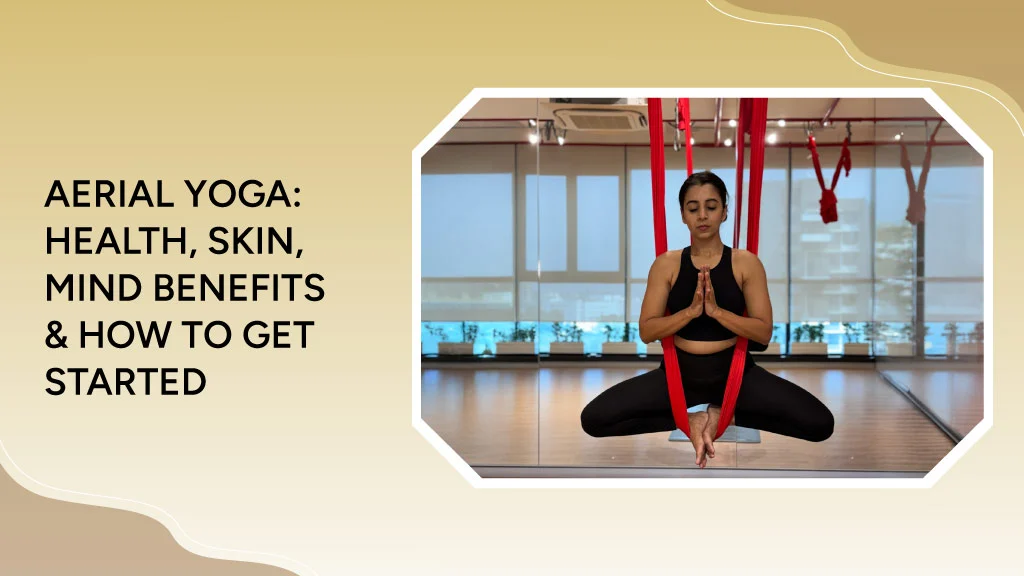Have you ever experienced that your yoga practice doesn’t feel grounded and comfortable? Your form and focus could be a reason for it. The surface you choose can become the secret factor. Selecting a yoga mat might look simple, as just picking a favourite colour, right? But there’s more to it. Whether it’s the texture, cushion, grip, or size, your mat can either support or sabotage your practice. Whether you’re just a beginner or an already experienced yogi, understanding how to choose a yoga mat that works best for you can elevate your experience to the next level in a way you would not have thought of.
Why Choosing the Right Yoga Mat is Essential?
Have you ever slipped while performing a downward dog yoga pose or felt your knees dig uncomfortably into the mat while performing the cat-cow yoga pose? These little annoyances often mean you’ve chosen the wrong yoga mat for your needs. Choosing the correct yoga mat matters a lot since your comfort, safety, and growth are connected to it.
Different levels of yoga practice require different levels of support. If you are practising hath or maybe restorative yoga, the softer yoga mat could be a preferable option. On the other hand, if you are practising Vinyasa or Power yoga, you need a mat that won’t slip even during quick movement.
Having a comfortable yoga mat supports the knees, wrists, and spine very well. Proper padding will protect and support you to hold each position for a longer time, especially when working on flexibility or strength. If your mat has a good grip, you don’t have to worry even during sweaty sessions.
Think of your yoga mat as a foundational tool. With the right one, your alignment improves, your joints are protected, and when everything goes well, you’ll be more excited to continue practising. Over time, this helps to add deeper flexibility, strength, and inner calm, which makes it a smart investment in your wellness journey. If you are still confused, connect with us, we have yoga classes in Mumbai to help every individual with all their doubts.
Experience the transformative capabilities of yoga with Eclipse Wellbeing. Contact now
Key Factors to Consider When Selecting a Yoga Mat
Trying to figure out how to choose a yoga mat that works best for you? These are the important things to look for when choosing a yoga mat that works for you.
1. Material
First, we need to look at what materials your yoga mat is made of. PVC mats are long-lasting and a great deal to use. It has a good grip while performing yoga poses. On the other hand, TPE mats perform well and are also environmentally friendly since they are lighter and can be recycled. If you want a natural texture or an ecologically friendly texture, a cotton or jute mat is soft, breathable, and serves well for grounding and steady training.
2. Thickness & Cushioning
Have you ever wondered why your joints hurt during your workout? One of the problems could be that the mat is not thick enough. The thickness of standard mats is around 3-4 mm and works nicely for most people. But those who require extra cushioning or are practising on hard floors should consider thicker mats, such as 6mm. A thinner mat (around 2-3 mm) is suitable for travelling, where it helps to balance. So, the decision on “how to select a yoga mat” comes from the level of comfort and preference.
3. Texture
Do you slide around as you do sun salutations? The texture matters. Smooth mats are easier to clean, but surfaces can be slippery. Textured mats, either natural or artificial (like those found in jute), make it more likely you will not slip with each step. Pick a base that gives you the level of comfort and grip you want.
4. Size & Portability
Do you carry your yoga mat to a class or just use it at home for your practice? Most standard mats are 68 inches long, but some people who are taller are better off with longer mats. Those who go on many trips or practise outside the home should look for lightweight mats that can be easily folded. The goal is to find something that’s functional and also easy to carry.
5. Eco-Friendliness
Concerned about the planet? So are many modern yogis. Mats produced from natural rubber, jute, or organic cotton are very eco-friendly choices. They are often biodegradable and free from harsh chemicals, which are safe for you and the Earth. When choosing a yoga mat, considering how it affects the environment is also a major factor.
Caring Tips For Your Yoga Mat
Following a few simple tips to clean your mat can help to maintain its shape and last longer.
- Regular Cleaning: After the end of every session, wipe your yoga mat with a light yoga mat cleaner or a mix of soap and water. It helps get rid of sweat, bacteria, and oils that could spoil the mat after a while.
- Deep Cleaning: It’s important to deep clean your yoga mat once a month using the instructions given by the manufacturer. Avoid using harsh cleaners, which can damage the surface.
- Drying: Remember to air dry your mat completely before you roll it up. A damp mat may produce mould, mildew, or cause the room to smell unpleasant.
- Storage: Mats should be placed where they are away from strong sunlight and heat, in a dry spot. Exposure to the elements can lead to the colours fading and deterioration.
- Rolling: Keep the mat with the practice side facing outward to prevent the edges from curling and to keep it functional.
Office lethargy getting you down? Learn office yoga poses to boost productivity at work
Conclusion
When you are deciding on “which is the best yoga mat” for you, ask yourself, What style of yoga do I practice? What comfort level do I need? Will I be travelling with it?
A well-chosen mat not only supports you to balance while practising yoga but also nurtures your commitment to daily practice. We have a yoga studio in Mumbai, and you can directly contact us at any time if you are still unsure and confused about anything.
Frequently Asked Questions
When shopping for a yoga mat, make sure to look at its material, thickness, texture, grip, ease of carrying, and eco-friendliness.
Yes, beginners can prefer yoga mats with more padding and a grip, but as you get more experienced, you can go for a thinner mat for more balance.
Yoga mats can range from ₹600–₹3,500. You can pick one according to your requirements. Choose a yoga mat that is durable and fits well with the kind of yoga you prefer to practice.
Not necessarily, though most of the mats are versatile; different types of yoga may require a different mat. Someone who practises dynamic style may require a mat that has an extra grip. And for restorative yoga practises, one may need a mat with thicker cushioning.
You should wipe your yoga mat every day and deep clean it once a month. Dry your mat completely in the open air and try keeping it away from sunlight to help it last longer.
There are a few key factors to consider when selecting a yoga mat, such as material
thickness & cushioning, texture, and many more.








